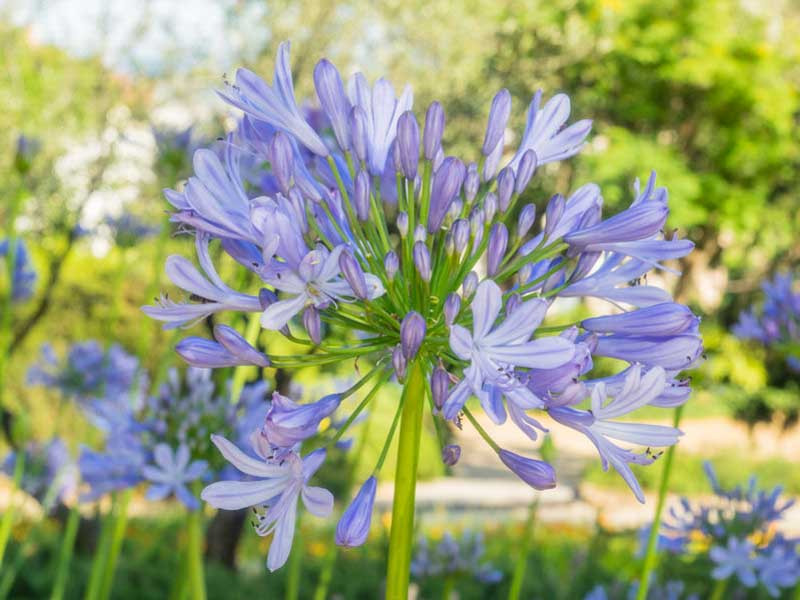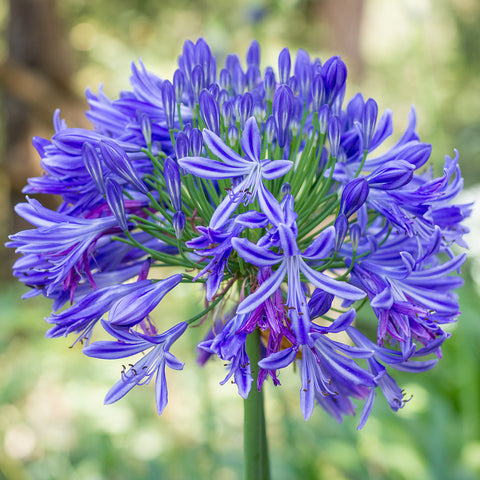Agapanthus Propagation: Tips for Expanding Your Plant Collection
Agapanthus Propagation: Tips for Expanding Your Plant Collection
Blog Article
Unleashing the Secret to Successful Agapanthus Farming: Idea for a Flourishing Garden
In the realm of gardening, cultivating agapanthus efficiently needs a tactical technique that includes different elements of plant care. With careful focus to information, one can open the keys to nurturing these magnificent flowers, leading to a yard that grows with beauty and vibrancy. By comprehending the nuances of agapanthus cultivation, one can create a setting where these plants thrive and grow generously. In the following conversation, we will check out necessary suggestions and methods that will assist you in the direction of a growing agapanthus garden, providing insights right into best techniques, soil problems, sprinkling strategies, and a lot more.
Planting Agapanthus: Ideal Practices
When growing Agapanthus, correct dirt prep work is crucial for guaranteeing effective development and advancement of these attractive blossoms. Agapanthus, typically called Lily of the Nile or African lily, grows in well-draining dirt with a somewhat acidic to neutral pH degree - Agapanthus. Before planting, it is essential to change heavy clay soils with natural matter such as garden compost or peat moss to enhance drain and offer necessary nutrients for the plants
To grow Agapanthus, choose a place that obtains full sunlight to partial color, as this will advertise healthy and balanced growth and abundant blooming. Dig a hole twice the diameter of the plant's root round and put the Agapanthus at the exact same deepness it was previously expanding. Gently backfill the hole with soil, pushing down strongly to eliminate any kind of air pockets around the roots.
Water the newly planted Agapanthus completely and remain to maintain the soil evenly moist, especially during the plant's active expanding period. Agapanthus. Applying a balanced plant food once a month can better sustain the plant's growth and blooming. By complying with these best methods for growing Agapanthus, you can produce a stunning display screen of these captivating flowers in your garden
Suitable Dirt Conditions for Agapanthus
For ideal growth and flowering success of Agapanthus plants, ensuring the dirt conditions are ideal is critical. Agapanthus prefers dirt that is rich in nutrients, so incorporating a well balanced plant food during the expanding season can promote healthy and balanced growth and dynamic blossoms.

Watering and Feeding Tips
To make sure healthy growth and vivid flowers, appropriate watering and fertilizing strategies are necessary for successful Agapanthus growing. Agapanthus plants benefit from normal watering, specifically during the growing period.
When it pertains to fertilizing Agapanthus, a balanced plant food with equal components nitrogen, phosphorus, and potassium can be applied in the springtime to promote healthy and balanced growth and flowering. Slow-release plant foods are perfect for providing nutrients slowly over an extensive duration. Prevent over-fertilizing, as this can lead to too much foliage development at the expenditure of blossoms.
Furthermore, incorporating organic matter like garden compost right into the soil can enhance nutrient levels and improve soil structure, assisting in the total health and wellness of the Agapanthus plants. By adhering to these watering and fertilizing suggestions, garden you could try these out enthusiasts can guarantee their Agapanthus plants thrive and produce sensational screens of blossoms.
Pruning and Deadheading Techniques
Proper pruning and deadheading strategies play an important role in preserving the wellness and aesthetic appeals of Agapanthus plants, enhancing the important methods of watering and feeding for successful growing. Trimming Agapanthus entails removing spent blossom heads, dead or yellowing fallen leaves, and overall shaping of the plant to advertise far better development. Deadheading, the procedure of getting rid of discolored flowers, not only improves the plant's look but additionally urges further blooming.
When deadheading Agapanthus, it is recommended to trim off the blossom stem at the base utilizing sharp, clean shears. This procedure reroutes the plant's energy from seed production back into root and vegetation growth, promoting a healthier and a lot i was reading this more durable plant. Normal deadheading can prolong the growing duration of Agapanthus and avoid self-seeding, which can result in congestion.
In regards to trimming, Agapanthus generally benefits from a light trim after flowering to clean up the plant and motivate fresh development. Reducing the spent flower stems and removing any type of dead or damaged vegetation aids keep the plant's vigor and general appearance. Nevertheless, it is necessary to prevent cutting into the crown of the plant, as this can compromise its health and wellness.

Protecting Agapanthus From Vermins and Diseases
Carrying out efficient pest and condition administration techniques is essential to safeguarding the wellness and vitality of Agapanthus plants in farming. Agapanthus are normally durable plants, however they can still come down with different insects and conditions otherwise properly taken care of. One typical bug that impacts Agapanthus is the Agapanthus borer, a caterpillar that tunnels into the plant, causing damages to the fallen leaves and flowers. To prevent infestations, routine inspection of the plants is crucial. If borers are discovered, they can be by hand removed, or insecticidal soap can be made use of as a control step.
Along with bugs, Agapanthus are susceptible to illness such as origin rot and fungal fallen leave places. These issues can commonly be prevented by guaranteeing correct drainage and preventing overwatering. If indications of condition appear, influenced parts of the plant ought to be immediately gotten rid of to avoid additional spread. Fungicides may also be utilized as a treatment procedure, adhering to the supplier's additional hints instructions very carefully. By remaining cautious and addressing insect and condition issues immediately, garden enthusiasts can aid their Agapanthus grow and prosper.

Verdict
To conclude, effective growing of agapanthus requires correct planting techniques, excellent soil problems, adequate watering and fertilizing, regular trimming and deadheading, and defense from insects and diseases. By following these ideas and tricks, garden enthusiasts can ensure a growing garden full of lovely agapanthus blooms. Agapanthus. Keep in mind to keep consistent treatment and attention to detail to advertise the health and wellness and longevity of these sensational plants
When growing Agapanthus, proper dirt preparation is vital for guaranteeing successful development and advancement of these beautiful flowers.Water the freshly grown Agapanthus thoroughly and continue to maintain the dirt equally damp, especially during the plant's energetic expanding season.For optimal development and growing success of Agapanthus plants, ensuring the dirt conditions are excellent is crucial. When planting or transplanting Agapanthus, ensure the soil is well-prepared to offer the necessary foundation for the plants to establish themselves successfully. One typical bug that influences Agapanthus is the Agapanthus borer, a caterpillar that passages right into the plant, creating damages to the flowers and fallen leaves.
Report this page